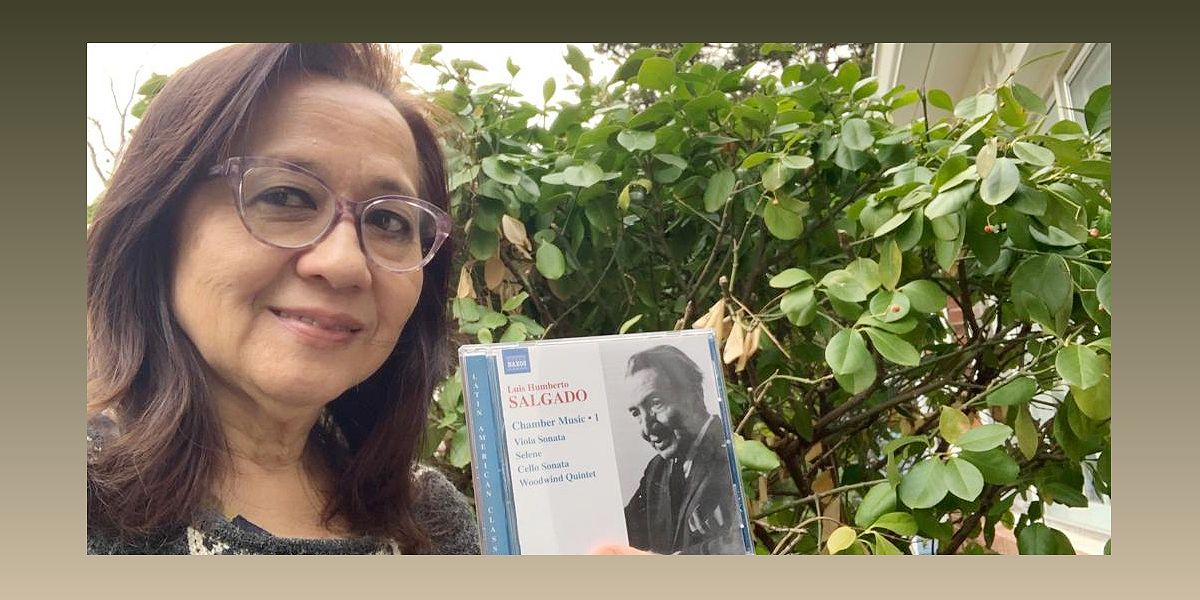Step into the world of Luis Humberto Salgado, an Ecuadorian composer whose pioneering compositions were ahead of their time. Despite living from 1903 to 1977, his orchestral and chamber music works remained hidden, waiting to be discovered. Inspired by Arnold Schoenberg's 12-tone technique, Salgado's compositions existed only in his mind and handwritten form. But now, thanks to a project led by Ketty Wong, an associate professor of ethnomusicology at the University of Kansas, Salgado's music is finally being unveiled to a global audience. Join us as we delve into the extraordinary journey of bringing Salgado's masterpieces to life and celebrating his fusion of vernacular music with avant-garde techniques.
The Unheard Melodies of Luis Humberto Salgado
Explore the hidden world of Luis Humberto Salgado's compositions, which remained unheard for decades.
Luis Humberto Salgado, an Ecuadorian composer ahead of his time, left behind a treasure trove of compositions that were never performed during his lifetime. Due to the absence of a symphony orchestra in Ecuador, his orchestral and chamber music works remained hidden. However, a project led by Ketty Wong aims to change that.
Through the efforts of the University of Kansas, 13 of Salgado's compositions for chamber music have been published and distributed, marking the first time they have been formally notated with individual instrument parts. This project sheds light on Salgado's unique fusion of vernacular music with avant-garde techniques, inspired by Arnold Schoenberg's 12-tone technique.
Four of Salgado's compositions have already been recorded by faculty members from the School of Music and released on the Naxos label. These recordings and sheet music were presented to the Ministry of Culture and Heritage in Ecuador, along with captivating performances of Salgado's music at prestigious venues such as the House of Music in Quito and the University of the Arts in Guayaquil.
With six more compositions scheduled for release in 2024, the world is finally getting a chance to appreciate the brilliance of Luis Humberto Salgado's music, which remained largely unknown and unpublished for far too long.
The Pioneering Spirit of Luis Humberto Salgado
Discover the innovative approach of Luis Humberto Salgado, who combined vernacular music with avant-garde techniques.
Luis Humberto Salgado is hailed as Ecuador's most prominent composer for his groundbreaking fusion of vernacular music with avant-garde techniques. His compositions encompassed a wide range of genres, including symphonies, operas, concertos, and works for piano and chamber ensemble.
What set Salgado apart was his ability to seamlessly blend traditional Ecuadorian music with experimental elements inspired by the likes of Arnold Schoenberg. His compositions challenged conventional musical boundaries and pushed the limits of what was considered possible at the time.
Salgado's innovative spirit shines through in his nine symphonies, four operas, and seven concertos, each showcasing his unique approach to composition. His music resonates with both musicians and audiences, offering a fresh perspective and a captivating listening experience.
Unveiling Salgado's Musical Legacy
Witness the efforts to bring Luis Humberto Salgado's music to the forefront of the global stage.
Ketty Wong's fascination with Luis Humberto Salgado began when she stumbled upon an Ecuadorian music journal dedicated to the composer. This encounter sparked her determination to uncover Salgado's hidden masterpieces and share them with the world.
Supported by the School of Music at the University of Kansas, Wong embarked on a mission to publish Salgado's sheet music and record his compositions. This endeavor involved meticulous transcription and notation work to ensure the accuracy and authenticity of Salgado's music.
Through this project, Salgado's compositions have gained recognition and appreciation outside of Ecuador. Musicians and audiences worldwide are now able to explore the rich musical legacy left behind by this extraordinary composer.
Salgado's Music: A Bridge Between Traditions
Experience the captivating fusion of traditional Ecuadorian music and avant-garde techniques in Salgado's compositions.
One of the most remarkable aspects of Luis Humberto Salgado's music is his ability to bridge the gap between traditional Ecuadorian music and avant-garde techniques. He seamlessly weaves together elements from both worlds, creating a unique and captivating sound.
Salgado's compositions incorporate traditional rhythms, melodies, and instruments from Ecuador, infusing them with innovative harmonies and structures. This fusion of musical traditions creates a mesmerizing listening experience that transports the audience to a world where the old and the new coexist harmoniously.
By embracing both tradition and innovation, Salgado's music serves as a bridge between different musical worlds, inviting listeners to explore new horizons while honoring the rich cultural heritage of Ecuador.
Salgado's Resurgence: A Triumph for Underrepresented Composers
Discover the significance of bringing Luis Humberto Salgado's music to the forefront of the classical music scene.
Luis Humberto Salgado's resurgence in the classical music scene holds immense significance, particularly for underrepresented composers. His compositions challenge the traditional canon and offer a fresh perspective that has long been overlooked.
As the world becomes more aware of the need for diversity and inclusivity in classical music, Salgado's music serves as a powerful example of the richness and depth that can be found in works by composers from underrepresented backgrounds.
By bringing Salgado's music to the forefront, we not only celebrate his extraordinary talent but also pave the way for future generations of composers who may have been overlooked in the past. Salgado's resurgence is a triumph for diversity and a testament to the transformative power of music.

